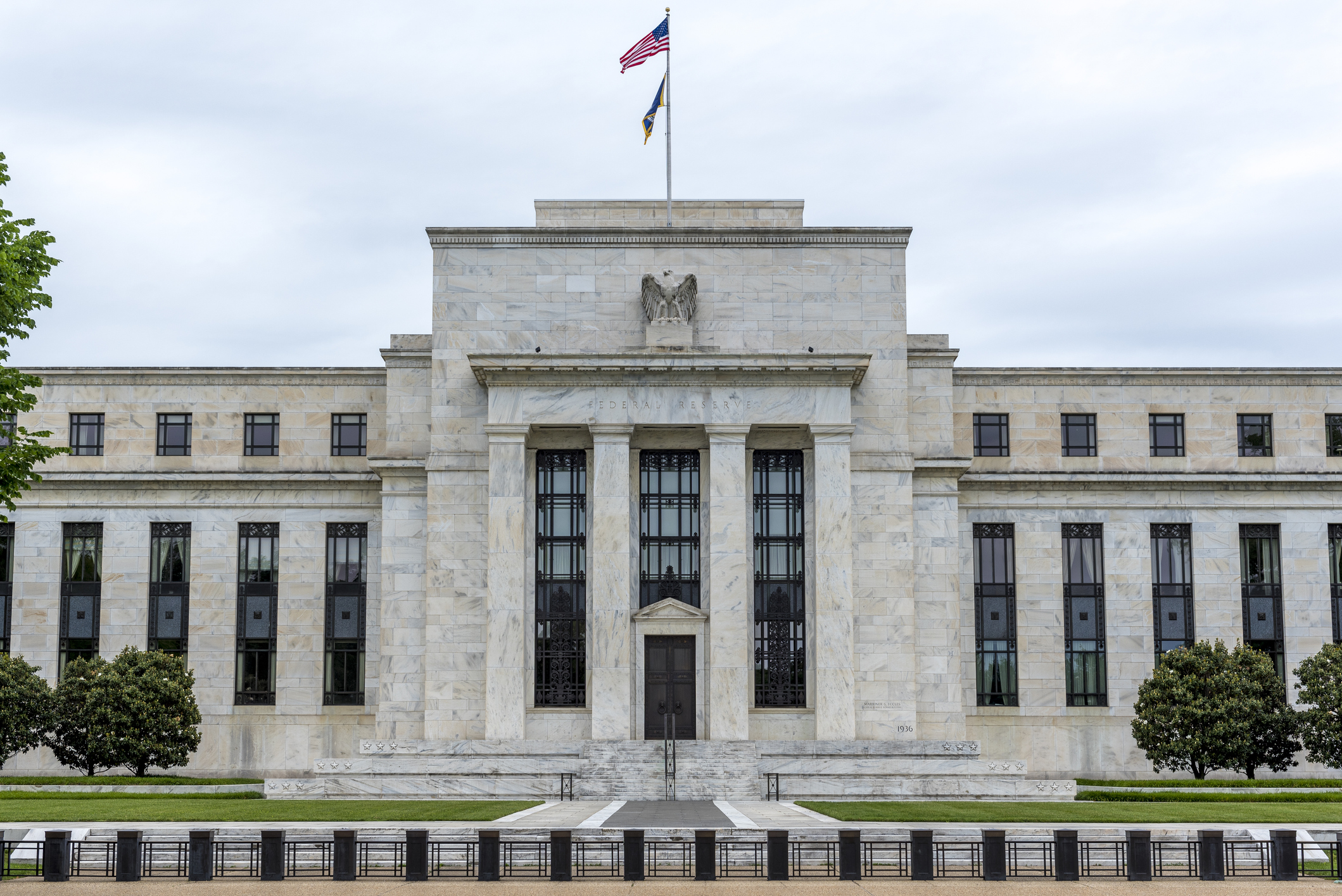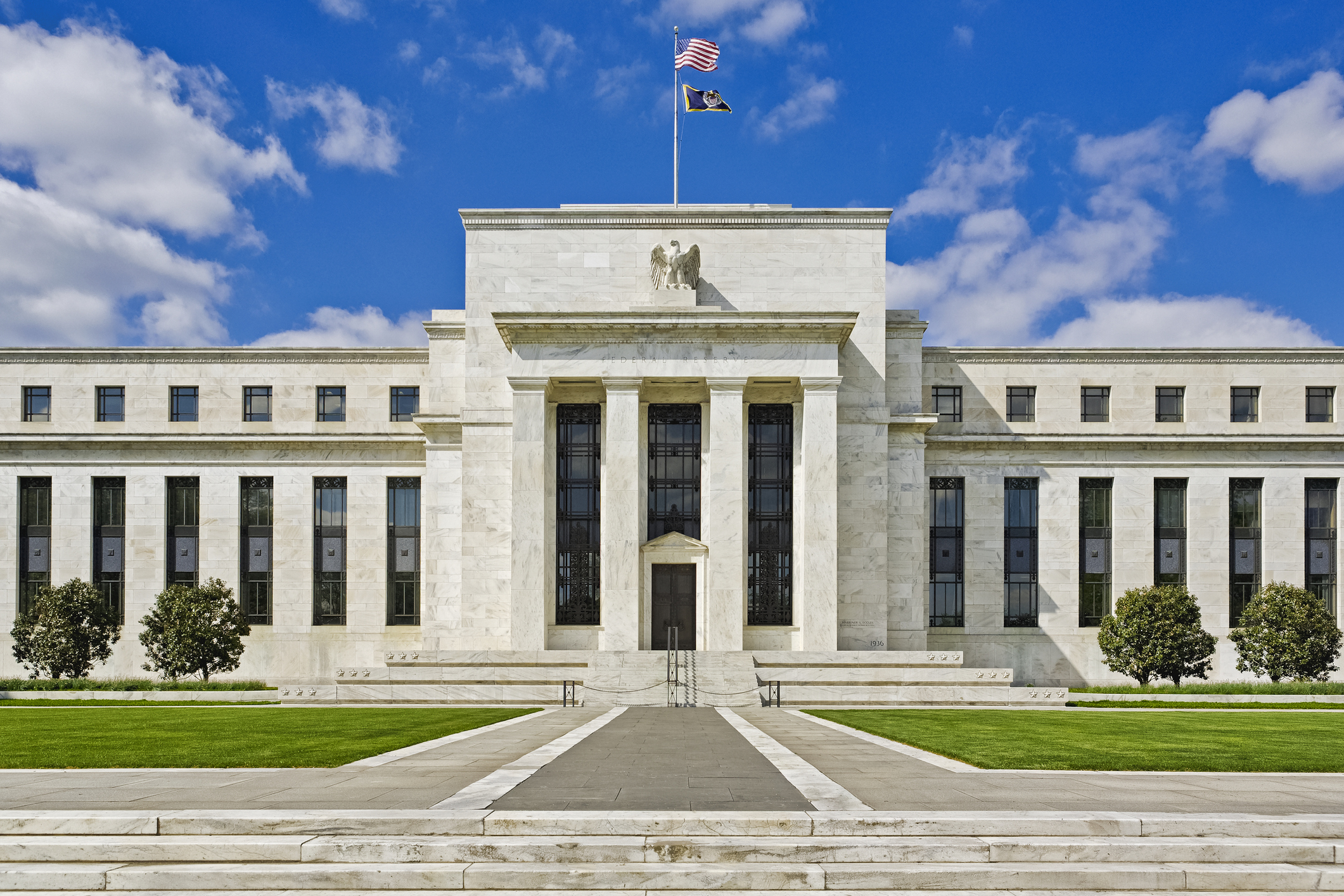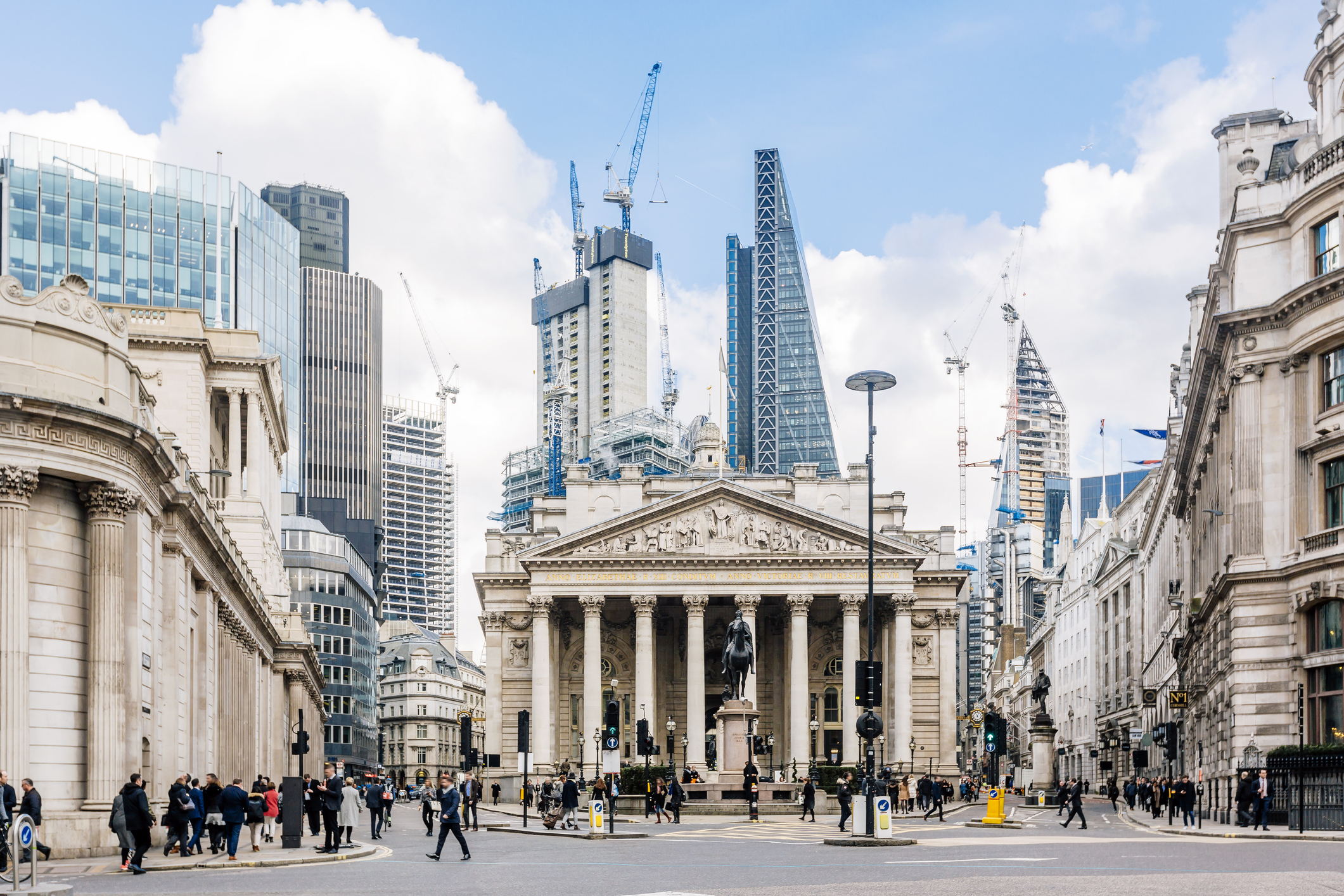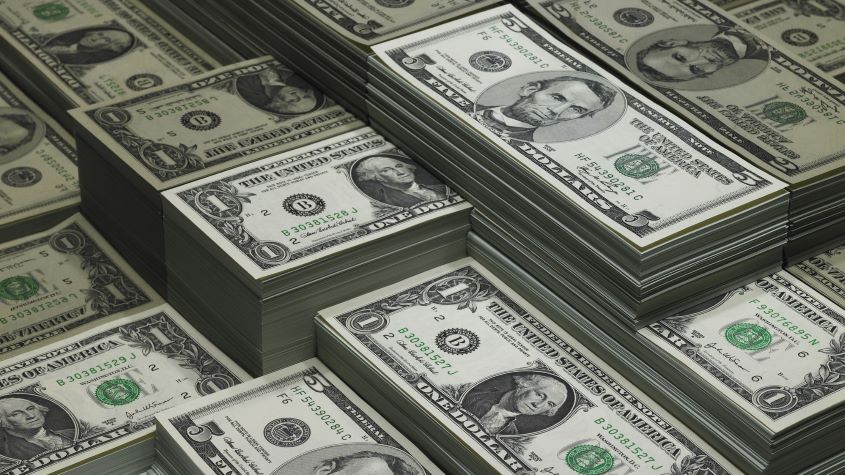Protect your wealth from the growing inflation threat
Will the Federal Reserve slay inflation? Given the mid-term elections in the US this year, it seems unlikely. That’s why you should make sure you own some gold.


Will the Federal Reserve stay the course and slay inflation? Given the mid-term elections in the US this year, it seems unlikely, says John Stepek. That's why you should make sure you own some gold.
This week, the yield on the ten-year US Treasury rose above 3% for the first time since 2014. And once it gets above 3.05%, we're looking at a seven-year high, back to levels unseen since 2011. In other words, it's getting steadily more expensive for the US government to borrow money. Why is this the case? Why are investors suddenly demanding a higher return for holding onto US government debt?
The most obvious answer is that investors expect US inflation to rise. The US economy currently looks reasonably strong. But the biggest issue is that the US workforce finally appears to be at full capacity. Unemployment is at 4.1%, a 17-year low. Jobless claims (the number of people joining the dole queues each week) are at or near their lowest levels since the early 1970s. And while wage inflation remains pretty mild, the proportion of people moving jobs to secure a better deal elsewhere is rising, and those who do move are getting pay rises on average of in advance of 4%.
MoneyWeek
Subscribe to MoneyWeek today and get your first six magazine issues absolutely FREE

Sign up to Money Morning
Don't miss the latest investment and personal finances news, market analysis, plus money-saving tips with our free twice-daily newsletter
Don't miss the latest investment and personal finances news, market analysis, plus money-saving tips with our free twice-daily newsletter
There's also plenty of anecdotal evidence of strong demand for skilled employees out there. As The Wall Street Journal reported this week, in certain parts of the US, where the labour market is particularly tight, railroad companies are offering "signing on" bonuses of anything between $10,000 and $25,000 for electricians and other staff.
As Ben Hunt of the Epsilon Theory newsletter puts it, investors are primed and ready to believe in the "inflation narrative" it'll only take a few more pieces of "surprisingly strong" data to convince them that rising prices are definitely on the way. This should all be good news for gold, shouldn't it? As we all know, gold is one of the best inflation hedges out there. Isn't it?
Gold and real interest rates
Well, it's not quite that simple. Gold does tend to do well in periods of rising inflation but only so long as interest rates don't keep up. Gold does not like rising "real" interest rates. "Real" interest rates are simply interest rates adjusted for inflation. This is a crucial distinction to make if you want to understand the true monetary backdrop at any given time. Nominal interest rates can be rising, but if inflation is rising more rapidly, then real interest rates will be falling in other words, monetary policy is getting looser.
On the other hand, in the early days of the 2008 financial crisis real interest rates rose sharply, despite central bankers cutting nominal interest rates, because inflation collapsed. Central bankers then deployed quantitative easing and even in some cases negative nominal interest rates, in order to offset deflationary pressures that would have driven "real" rates higher, thus tightening monetary policy.
Charlie Bilello of US investment adviser Pension Partners notes that since 1975 (when trading in gold futures began, shortly after the metal was untethered from the US dollar) there has been a reasonably strong inverse correlation between ten-year US real interest rates and the price of gold. Generally speaking, when the "real" rate is falling, gold rises, and when it is rising, gold falls. This makes complete sense.
Gold is extremely volatile on a day-to-day basis, but it demonstrably maintains its value over the very long term (the example often given is that today you could buy a decent suit for roughly the same amount of gold as a decent toga would have set you back in ancient Rome). However, gold doesn't pay any sort of income indeed, it will cost you to hold it (in storage fees).
In effect, when you buy gold you are investing in a zero-coupon index-linked bond with no maturity date. So if another ostensibly "safe-haven" asset such as a US government bond is offering to pay you a rate that actually beats inflation and you expect this happy state of affairs to continue then a rational investor will view the bond as the better bet. That diminishes gold's appeal, denting the price.
Bilello notes that while the correlation is definitely significant, it is not the be all and end all there are plenty of occasions on which gold has moved in the same direction as real interest rates, rather than against them.
However, Nicholas Johnson at Pimco argues that the introduction and growing popularity of exchange-traded funds (ETFs), which own bullion and track the price of gold, has changed the structure of the gold market by making it much more liquid (in other words, easier to buy and sell). That suggests that gold's behaviour in future is more likely to reflect the post-2004 era rather than the decades prior to the widening availability of ETFs. In other words, while real rates are not the only significant influence on the gold price, "we believe that real yields are the single most important factor".
President Trump is inflationary
The question, then, is what's going to happen with real interest rates? As John Authers notes in the Financial Times, real rates have risen since the days of the "taper tantrum" in 2013, which was when the Federal Reserve signalled the beginning of the end for quantitative easing. Since then, the Fed has raised interest rates a number of times but inflation has kept pace. As a result, says Authers, "the process of normalisation is under way, but has a way to go before we get back to the levels that adhered even in 2008".
So the question is: will the Fed keep hiking rates in such a way as to contain inflation, or will it lose its nerve in the face of panicking stockmarkets (the Dow Jones celebrated the 3% US Treasury yield by tanking 400 points), and assuage fretful investors? So far new Fed boss Jerome Powell has given the impression that he's the man to pull the punch bowl away. However, his mettle is set to be sorely tested later this year.
The thing is, it's hard to see President Donald Trump being happy about the stockmarket cratering at a time when he has vital mid-term elections coming up. Just as British people view house prices as a barometer of their personal economic condition, so an American's sense of prosperity is at least partly attached to how well the stockmarket is doing.
So the last thing an unpopular president wants is for the headlines to be talking about triple-digit falls in the Dow come polling day. Combined with Trump's entirely relaxed attitude towards government spending and deficits, this suggests to us that any political pressure he can bring to bear on the Fed would very much be in the direction of keeping monetary policy as loose as possible.
On top of that, trade wars or other restrictions on the free flow of capital and goods (such as sanctions) are inflationary stagflationary, to be precise in that they make goods harder to get, and thus more expensive, while also harming global business activity, and thus impacting on growth. You need only look at the effect that the threat of Russian sanctions had on the nickel and aluminium prices earlier this month to see this in action. And this is all before we get to any of the nastier geopolitical issues out there, such as North Korea, or Syria, or Russia, or Iran.
Why you should own gold
In short, we're not ready to write gold off yet. Things may go smoothly we may get just the right amount of inflation and the Fed may return us to normal without any mishaps. But it's worth being prepared just in case. That's why, here at MoneyWeek, we've always argued that you should have at least 5% to 10% of your investment portfolio in physical gold.
It is sufficiently different from other assets (eg, stocks and bonds) to offer genuine diversification, particularly at a time when both equities and bonds are expensive relative to history. It's also the only financial asset that does not depend on a counterparty gold is gold, it's not reliant on the backing of a government or the solvency of a company or even (depending on where you keep it) the reliability of property laws.
You can buy physical gold in person from several bullion merchants. We speak to one Baird & Co but there are several others, including Sharps Pixley, The Pure Gold Company and ATS Bullion all have branches in London. Other options include buying physical gold online and having it delivered to your houseor stored in a secure third party vault in services provided by companies such asGoldCoreor BullionByPost.
If you're not keen to store your own gold then opt for an online specialist such as BullionVault.com. Finally, you can invest via an ETF backed by bars in a vault, such as ETFS Physical Gold ETF (LSE: PHAU).
If you want to make a punchier bet on gold, then you might want to consider investing in silver. Silver is also a monetary metal, but it tends to be more volatile than gold and is also more heavily influenced by the economic cycle (silver is used more in industry than gold is). What's currently particularly interesting about silver is that the gold/silver ratio (the number of ounces of silver it would take to buy one ounce of gold) is sitting at around 80.
That's historically very high, and it suggests that either silver needs to play catch-up, or that gold needs to fall. If you believe it's the former, then you could buy physical silver, but the downside is that, unlike gold, you have to pay VAT (if you take delivery). A better bet for simple exposure to the silver price is probably the silver ETF, ETFS Physical Silver (LSE: PHAG).
And for those interested in something more exotic, my colleague Chris Carter looks at a very rare precious metal rhodium.
Get the latest financial news, insights and expert analysis from our award-winning MoneyWeek team, to help you understand what really matters when it comes to your finances.
John Stepek is a senior reporter at Bloomberg News and a former editor of MoneyWeek magazine. He graduated from Strathclyde University with a degree in psychology in 1996 and has always been fascinated by the gap between the way the market works in theory and the way it works in practice, and by how our deep-rooted instincts work against our best interests as investors.
He started out in journalism by writing articles about the specific business challenges facing family firms. In 2003, he took a job on the finance desk of Teletext, where he spent two years covering the markets and breaking financial news.
His work has been published in Families in Business, Shares magazine, Spear's Magazine, The Sunday Times, and The Spectator among others. He has also appeared as an expert commentator on BBC Radio 4's Today programme, BBC Radio Scotland, Newsnight, Daily Politics and Bloomberg. His first book, on contrarian investing, The Sceptical Investor, was released in March 2019. You can follow John on Twitter at @john_stepek.
-
 ‘Why I have ditched my Help to Buy ISA for cash savings and the stock market’
‘Why I have ditched my Help to Buy ISA for cash savings and the stock market’Without the 25% bonus, my Help to Buy ISA is effectively redundant, says MoneyWeek writer Sam Walker.
-
 Is your inheritance tax allowance cut if you sell to downsize or sell your home to pay for care?
Is your inheritance tax allowance cut if you sell to downsize or sell your home to pay for care?Downsizing relief is a little-known benefit that could save your loved ones tens of thousands of pounds in inheritance tax after you’ve died.
-
 'Governments are launching an assault on the independence of central banks'
'Governments are launching an assault on the independence of central banks'Opinion Say goodbye to the era of central bank orthodoxy and hello to the new era of central bank dependency, says Jeremy McKeown
-
 Do we need central banks, or is it time to privatise money?
Do we need central banks, or is it time to privatise money?Analysis Free banking is one alternative to central banks, but would switching to a radical new system be worth the risk?
-
 Will turmoil in the Middle East trigger inflation?
Will turmoil in the Middle East trigger inflation?The risk of an escalating Middle East crisis continues to rise. Markets appear to be dismissing the prospect. Here's how investors can protect themselves.
-
 Federal Reserve cuts US interest rates for the first time in more than four years
Federal Reserve cuts US interest rates for the first time in more than four yearsPolicymakers at the US central bank also suggested rates would be cut further before the year is out
-
 The Bank of England can’t afford to hike interest rates again
The Bank of England can’t afford to hike interest rates againWith inflation falling, the cost of borrowing rising and the economy heading into an election year, the Bank of England can’t afford to increase interest rates again.
-
 Interest rates held at 5.25% again
Interest rates held at 5.25% againThe Bank of England has kept rates at 5.25% again, in a widely anticipated move. We look at what it means for your money - and what the Bank’s next move could be
-
 US inflation rises to 3.7% as energy prices surge - will the Fed hike rates?
US inflation rises to 3.7% as energy prices surge - will the Fed hike rates?US consumer price index rose in August but markets do not expect a rate hike this month
-
 The debt ceiling illustrates America’s empire of debt
The debt ceiling illustrates America’s empire of debtOpinion The US has never quite got the hang of the conquering business as the debt ceiling debate shows.
